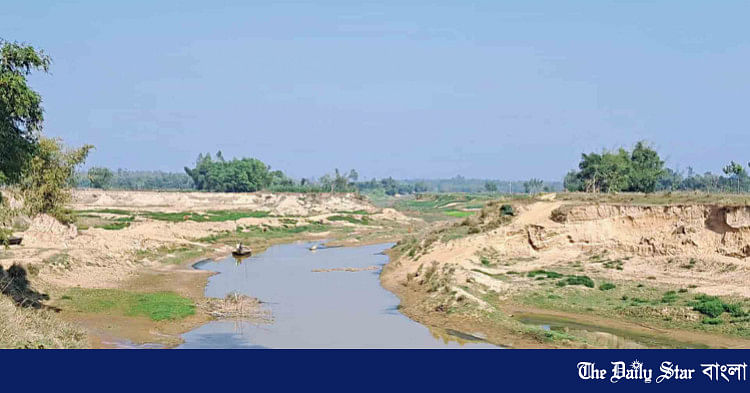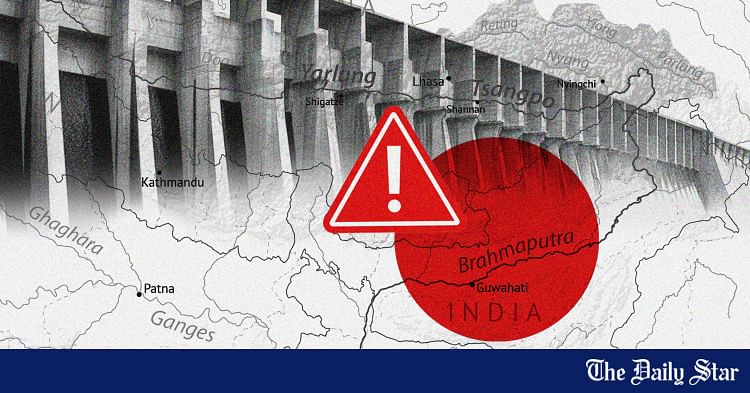- Copy to clipboard
- Thread starter
- #101
Saif
Senior Member
- Messages
- 14,591
- Reaction score
- 7,615
- Origin

- Residence

- Axis Group


Sharing water from common rivers
With some 54 rivers flowing down from upstream India through Bangladesh to the Bay of Bengal, the question of management and sharing of the water from these rivers between the two neighbours cannot be overstated. The late August flash floods caused by incessant rain and sudden onrush of waters from
Sharing water from common rivers
Published :
Sep 24, 2024 22:07
Updated :
Sep 24, 2024 22:07

File photo used for representational purpose only
With some 54 rivers flowing down from upstream India through Bangladesh to the Bay of Bengal, the question of management and sharing of the water from these rivers between the two neighbours cannot be overstated. The late August flash floods caused by incessant rain and sudden onrush of waters from upstream state of Tripura in India that devastated the eastern, southeastern and northeastern districts of the country are a stark reminder of the danger a downstream country is exposed to in absence of river water management agreement with a country lying upstream. So far as the information sharing agreement with India is concerned, there was some misunderstanding. The two sides have contrary versions. What really happened should be made public. It is encouraging that the adviser to the environment, forest, climate change and water resources ministry during her recent visit to the flood-damaged eastern and north-eastern districts stressed urgent action on river water management between Bangladesh and India. Also, as a bulwark against future floods, the government, she further noted, was planning construction of embankments at strategic locations downstream. These are welcome decisions long time coming.
That the interim government has finally decided to take up the issue of water sharing from common rivers with India as a co-sharer, not a favour-seeker, is only expected of a self-respecting, sovereign co-basin country. Hopefully, the interim government will follow through with the promise in the future. Talking of the management and sharing of water from transboundary rivers, to date, only one long-term river water management treaty, the Ganges Water Sharing Treaty (GWST), exists between the two countries. But the GWST signed in 1996, too, is going to expire in 2026. So, it is imperative that the interim government start taking preparations for reviewing and renegotiating the treaty for Ganges water sharing after 1996. It is better, if a modified Ganges water sharing deal could be struck in which all the co-basin countries Nepal, Bangladesh and India are involved.
At the same time, Bangladesh should strongly pursue the stalled Teesta water sharing treaty. The irony is, the Teesta water sharing talks hit a dead end at a time when India's most friendly government of deposed Sheikh Hasina was in office in Bangladesh. Whereas, during the military regime in 1983, the two countries could reach a provisional agreement to share Teesta water during the lean pre-monsoon period. Under that agreement, Bangladesh would get 36 per cent of the water, while India would get 39 per cent, and the rest 25 per cent water would be left unallocated. Though the agreement was to expire in 1985, it was extended till 1987. Since then, no further progress on reviving the treaty was reported. However, a Teesta water deal set to be inked by the then-Indian prime minister Manmohan Singh during his Dhaka visit in 2011 was torpedoed by what was said to be India's internal politics. Let India's internal politics be the way it is. But that must not be a reason for depriving Bangladesh of its fair share of a transboundary river.
So, Bangladesh should activate the Joint Rivers Commission (JRC) to continue discussion on sharing waters from transboundary rivers including the Teesta with India. At the same time, it should also involve, if necessary, relevant international forums to get its legitimate share of water from the transboundary rivers between India and Bangladesh.
Published :
Sep 24, 2024 22:07
Updated :
Sep 24, 2024 22:07
File photo used for representational purpose only
With some 54 rivers flowing down from upstream India through Bangladesh to the Bay of Bengal, the question of management and sharing of the water from these rivers between the two neighbours cannot be overstated. The late August flash floods caused by incessant rain and sudden onrush of waters from upstream state of Tripura in India that devastated the eastern, southeastern and northeastern districts of the country are a stark reminder of the danger a downstream country is exposed to in absence of river water management agreement with a country lying upstream. So far as the information sharing agreement with India is concerned, there was some misunderstanding. The two sides have contrary versions. What really happened should be made public. It is encouraging that the adviser to the environment, forest, climate change and water resources ministry during her recent visit to the flood-damaged eastern and north-eastern districts stressed urgent action on river water management between Bangladesh and India. Also, as a bulwark against future floods, the government, she further noted, was planning construction of embankments at strategic locations downstream. These are welcome decisions long time coming.
That the interim government has finally decided to take up the issue of water sharing from common rivers with India as a co-sharer, not a favour-seeker, is only expected of a self-respecting, sovereign co-basin country. Hopefully, the interim government will follow through with the promise in the future. Talking of the management and sharing of water from transboundary rivers, to date, only one long-term river water management treaty, the Ganges Water Sharing Treaty (GWST), exists between the two countries. But the GWST signed in 1996, too, is going to expire in 2026. So, it is imperative that the interim government start taking preparations for reviewing and renegotiating the treaty for Ganges water sharing after 1996. It is better, if a modified Ganges water sharing deal could be struck in which all the co-basin countries Nepal, Bangladesh and India are involved.
At the same time, Bangladesh should strongly pursue the stalled Teesta water sharing treaty. The irony is, the Teesta water sharing talks hit a dead end at a time when India's most friendly government of deposed Sheikh Hasina was in office in Bangladesh. Whereas, during the military regime in 1983, the two countries could reach a provisional agreement to share Teesta water during the lean pre-monsoon period. Under that agreement, Bangladesh would get 36 per cent of the water, while India would get 39 per cent, and the rest 25 per cent water would be left unallocated. Though the agreement was to expire in 1985, it was extended till 1987. Since then, no further progress on reviving the treaty was reported. However, a Teesta water deal set to be inked by the then-Indian prime minister Manmohan Singh during his Dhaka visit in 2011 was torpedoed by what was said to be India's internal politics. Let India's internal politics be the way it is. But that must not be a reason for depriving Bangladesh of its fair share of a transboundary river.
So, Bangladesh should activate the Joint Rivers Commission (JRC) to continue discussion on sharing waters from transboundary rivers including the Teesta with India. At the same time, it should also involve, if necessary, relevant international forums to get its legitimate share of water from the transboundary rivers between India and Bangladesh.









